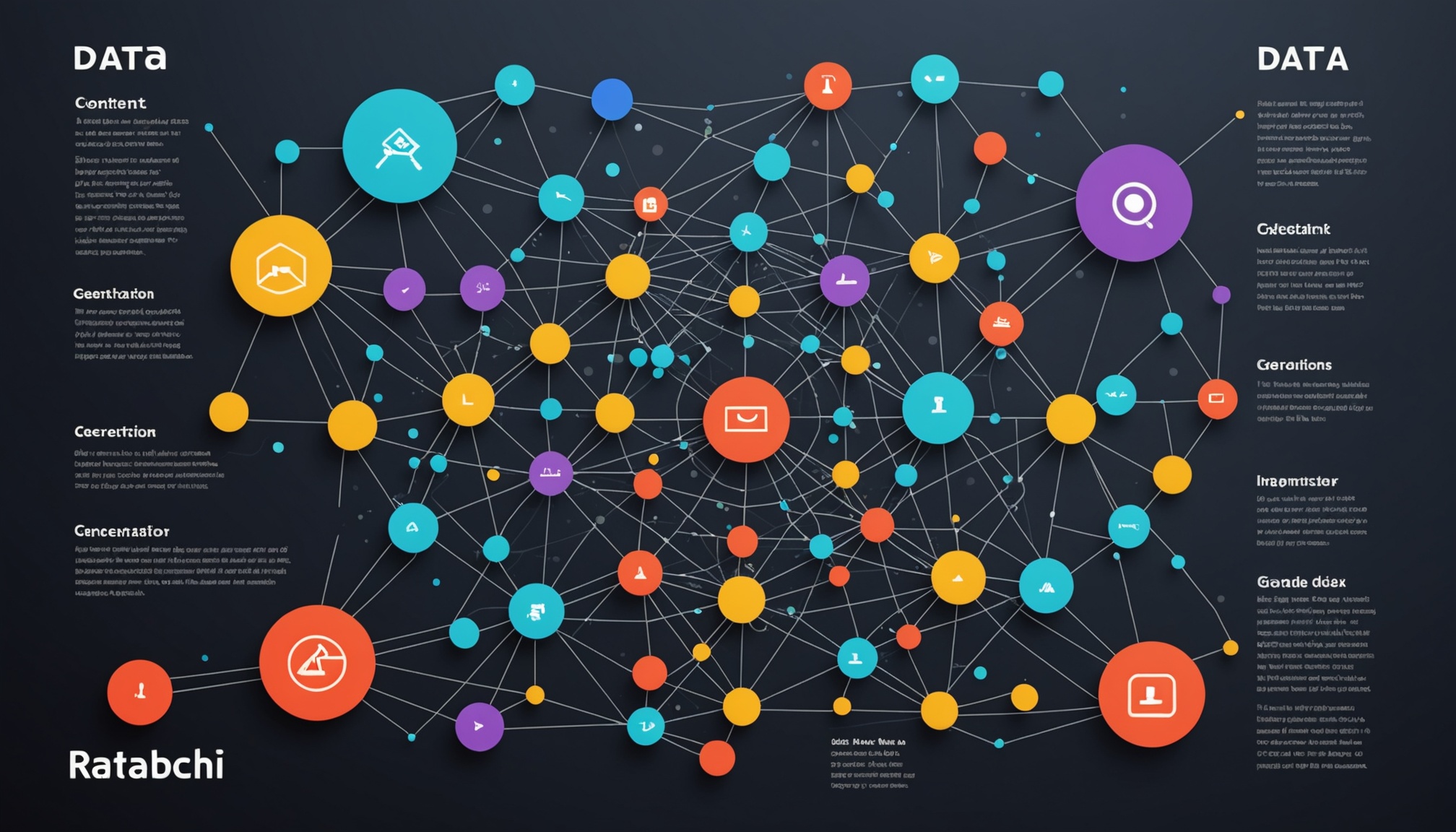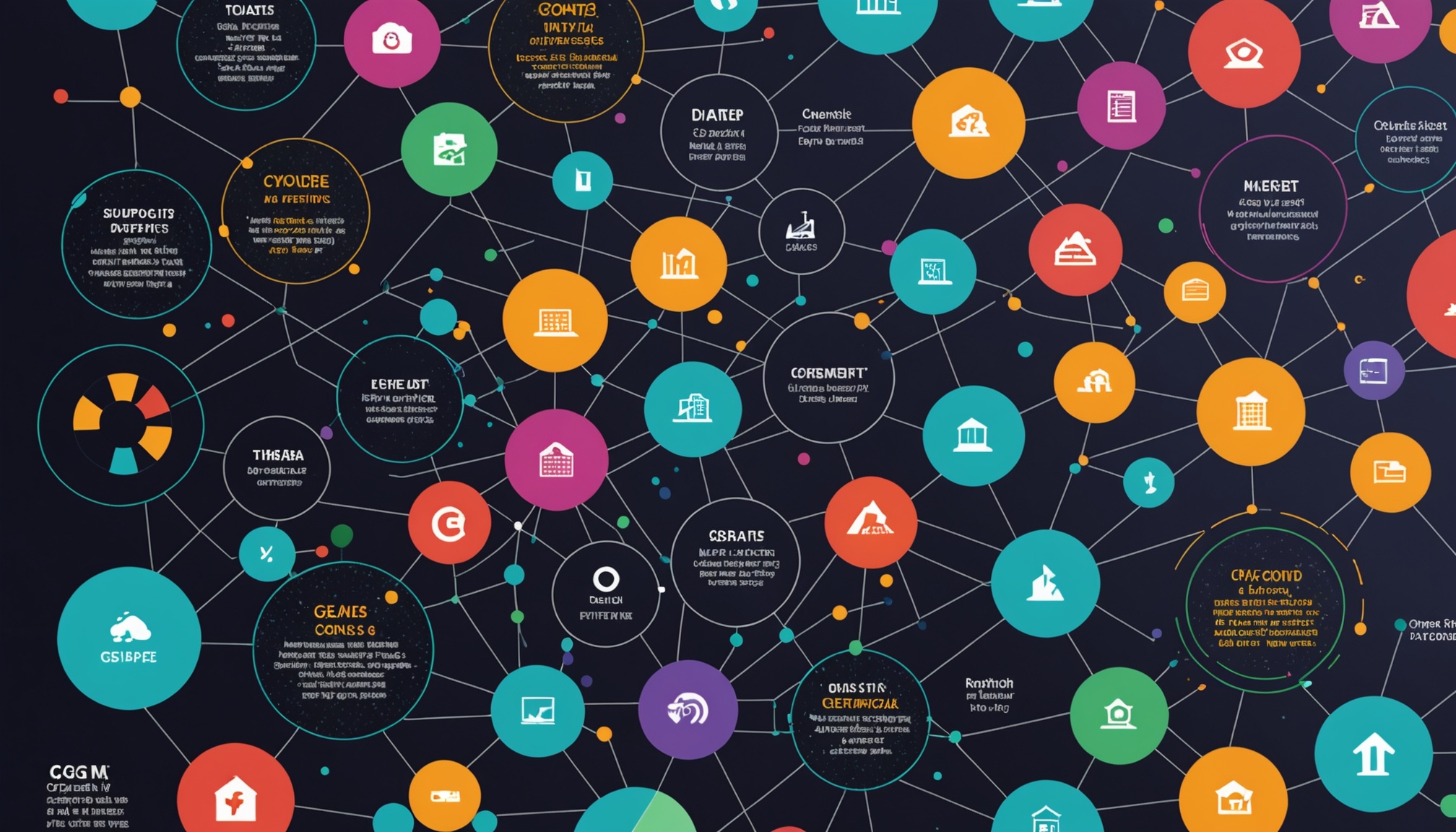If you’ve ever felt buried by a never-ending list of blog posts, social updates, and email newsletters, you’re definitely not alone. Content demands can pile up faster than you can hit “publish.” That’s where content planning tools swoop in to save the day. Instead of juggling scattered ideas and worrying about meeting deadlines, you get to map everything in one place, shape your editorial calendar in line with your SEO goals, and make each piece of content work harder for you. In this post, you’ll discover how these tools elevate your digital presence by keeping you organized, consistent, and focused on what really matters: creating great content that drives results.
Your upfront takeaway: a clear content plan doesn’t just reduce overwhelm, it ensures that every blog post, social share, or video has a purpose and aligns with wider business objectives. Plus, a robust plan helps you measure the results, refine your approach, and keep your marketing efforts on track. Ready to delve into some of the best tools in the market? Let’s dive in.
Recognize the value of content planning
You might be thinking, “What’s the big deal about planning ahead?” Actually, content planning is more than just a to-do list. It’s a chance to shape your brand’s story so that each post hits home for your audience. Here’s why a well-thought-out approach matters:
- You’ll reduce last-minute scrambles. Having a monthly content calendar, with clear targets and themes, frees you from constantly brainstorming on the spot. Planning ensures each piece ties to your bigger marketing goals (The Content Consultancy).
- You’ll stay consistent. Audiences love reliability. By mapping out posts in advance, you can deliver content with regularity, building ongoing engagement and trust (Astute).
- You’ll measure and adapt. When you know exactly what you’re publishing and why, reviewing your analytics becomes straightforward. That means more time to spot what’s working and finetune what’s not (The Content Consultancy).
- You’ll keep your team on the same page. Content planning tools help writers, designers, and marketers collaborate. Everyone sees the plan, making it easier to align formats, deadlines, and messaging.
At heart, content planning tools help you become the calm conductor of your marketing orchestra, ensuring every part works well together, sounds great, and serves the bigger show.
Explore essential categories of tools
When you start shopping around for content planning tools, you’ll definitely notice there’s no one-size-fits-all option. Instead, think of tools in clusters that solve particular challenges. Some focus on project management for scheduling and deadlines, while others excel at optimizing content for SEO or uniting social media campaigns under one roof. Below are the main categories of tools that can shape your planning and help you create better content.
Project management tools that double as content planners
If you have multiple content creators, collaborating designers, and a busy editorial calendar, a project management tool might be your new best friend. They’re designed to organize tasks, share ideas, and track deadlines, but many also support building content roadmaps.
Monday.com
Monday.com stands out for its customizable boards, letting you assign tasks, add due dates, and link relevant files. You can set up an editorial pipeline for your posts or videos, ensuring everyone knows their role, while also visualizing each project’s status (SocialBee Blog). Monday.com’s versatility is a real plus if you want a system you can tweak to suit your exact workflow.
Asana
Asana is a popular name in the project management world, known for straightforward task-setting and scheduling. Imagine laying out your monthly content plan here: each blog post becomes a “task,” with subtasks for keyword research, writing, editing, and design (Planable). It’s not as content-specific as some other tools, but if you need a broad system that you can adapt, Asana might be perfect.
ProofHub
ProofHub is another all-in-one solution designed with teams in mind. It’s especially handy if your content plan involves a lot of visual assets or if you need easy proofing and approval features (SocialBee). You can maintain a content calendar, keep track of document versions, and collaborate with your team in real time.
Notion
Notion thrives on flexibility. You can create pages for brainstorming, embed content calendar tables, and store all brand assets in one place. Whether you’re organizing new blog ideas or tracking design updates, you can shape Notion precisely around your process (Planable). Its minimal design also makes it easy to see important details without feeling cluttered.
Teamwork
Teamwork is known for its client-friendly approach. If part of your content strategy involves external stakeholders, freelancers, or agencies, Teamwork’s permission settings and collaboration features can help keep everyone aligned (Planable). You can also integrate time tracking to monitor how long each content piece takes from outline to publication.
Social media and multi-channel scheduling tools
When you’re marketing across platforms—LinkedIn, TikTok, email, blog, you name it—you need a tool that wrangles all of these channels into one neat environment. Consistency is key in brand building, and these apps help you schedule, track, and plan content for multiple outlets without feeling scattered.
SocialBee
SocialBee is built to simplify social media content planning and management. If you’re juggling multiple social platforms, you can centralize your planning, schedule posts in advance, and coordinate your publishing calendar with your broader brand goals (SocialBee). The tool’s user-friendly interface and integration with major social networks is a big draw for busy marketing teams.
StoryChief
StoryChief focuses on multi-platform publishing, which is a blessing when you want a consistent message to go out through your blog, social media, and newsletters at once (SocialBee). It supports streamlined approval processes and performance tracking. If you live for easy cross-posting, you’re likely to appreciate StoryChief’s centralized dashboard.
Planable
Planable is another contender you’ll love if your main challenge is collaborating on social posts. The platform offers a clear interface where you and your team can sketch the post’s text, attach visuals, and debate changes in the comments. Once you finalize, you can set a publishing date, and Planable will handle the rest (Planable).
AI-powered SEO and content optimization tools
Creating regular content is great, but it only pays off if people actually find it. That’s where SEO-savvy tools come in. They help you identify trending topics, sort out keywords, and optimize drafts so your articles shine in search results. You’ll also find specialized content optimization tools that sharpen style, tone, and length.
MarketMuse
MarketMuse uses AI to dig deep into your site’s existing content and identify topic clusters that you could rank for (MarketMuse). You can discover gaps, refine your structure, and ensure your blog posts or guides align with your top SEO priorities. It’s a way to squeeze more value from every word you publish.
Surfer
Surfer is known among SEO pros for its step-by-step guidance. Type in your target keyword, and the tool will show you recommended word counts, keyword usage, and structure tips (Surfer SEO). With the platform’s AI Humanizer feature, you can give your text a more human tone, which helps content sound natural while still pleasing the search algorithms.
Scalenut
Scalenut helps content creators plan, monitor, and optimize their work under one roof. It features on-page checks, competitor visibility tracking, and AI-driven suggestions for your content structure (Scalenut). What sets Scalenut apart is its ability to track brand mentions and even analyze key prompts that shape AI search engine results.
WriterZen
WriterZen provides a neat range of features: keyword explorer, topic discovery, planning tools, and an AI assistant for your drafts (WriterZen). Think of it as a complete pipeline where you can gather main topics, refine them with strong keywords, and then craft your final copy. If you’re juggling multiple content types, WriterZen can act as a handy command center.
Rankability
Rankability relies on AI to fine-tune your optimization efforts. From topic-based scoring to instantly created outlines, you’re covered whether you’re writing for Google or platforms like ChatGPT (Rankability). Additionally, Rankability’s Keyword Finder helps you pinpoint which questions people ask and how to tailor your articles so that you become the go-to answer source.
Frase
Frase stands out for its data-driven briefs and comprehensive competitor analysis (Frase). If you’re researching a new blog post, Frase compiles headings, keywords, and references from top-performing articles, giving you an informed head start. Once your draft is done, you can optimize for search engines, ensuring each heading or sub-point aligns with relevant queries.
Clearscope
Clearscope uses AI to guide you toward top-ranking content by pointing out the main topics and keywords that your readers (and Google) expect. As you write, Clearscope updates a content score so you can see if you’re meeting best practices (Clearscope). The aim is to help you create authoritative posts from the get-go, so you spend less time editing later.
Outranking
Outranking merges SEO research, content planning, and writing assistance in a single platform. You can get an instant overview of user-intent keywords, competitor insights, and tips to make your piece stand out (Outranking.io). If you care about hitting Google’s evolving E-A-T guidelines (experience, expertise, authority, trustworthiness), Outranking offers built-in suggestions to strengthen content credibility.
NEURONwriter
NEURONwriter’s advanced editor guides you through semantic terms, giving you solid suggestions to beef up the relevance of your posts (NEURONwriter). A big plus: it provides step-by-step checklists, so if you’re new to SEO, you’ll never feel lost. And if you’re more experienced, the tool helps speed up research and highlight competitor weaknesses.
Dashword
Dashword focuses on slicing your research time in half by pulling all relevant data—keywords, top search results, and more—into a ready-to-go brief (Dashword). After you hit publish, it monitors your content’s performance and flags any underperforming pages so you can jump in and improve them. It’s all about consistent, data-led optimization.
Comprehensive content management for diverse needs
Sometimes you need a single solution to handle it all—content creation, scheduling, SEO analytics, and even design tasks. Think of these platforms as multifunctional hubs where you can brainstorm, plop in your images, schedule social media posts, and measure returns.
StoryChief (again)
While we touched on StoryChief’s multi-platform publishing prowess, it’s worth emphasizing how it helps you unify your entire editorial process. You’ll see each piece’s status, assign tasks to collaborators, and gather feedback in one place. Then you can publish your polished masterpiece across every platform you’d like.
Planable (again)
Planable isn’t limited to social media alone. You can also map out your blog and other channels in a flexible content calendar. The comment-based collaboration features help you track changes, making it clear who said yes to that final headline or who wants a tweak on that last paragraph.
SEO content workflow software
If you crave deeper SEO features tied directly to your editorial process, you might explore dedicated SEO content workflow software. These platforms are designed to keep an eye on your target keywords, your content’s structure, and any internal linking opportunities you need to include. By integrating SEO best practices into every step, you eliminate guesswork and keep your strategy cohesive.
Compare features in a quick snapshot
Sometimes it helps to see a side-by-side summary. Below is a quick table contrasting a few solutions covered here:
| Tool | Main Focus | Ideal For |
|---|---|---|
| Monday.com | Project management, scheduling | Teams needing a highly customizable workflow |
| SocialBee | Social media planning and publishing | Social-focused marketers juggling multiple channels |
| MarketMuse | AI-powered content strategy | Brands wanting topic clusters and content audits |
| Surfer | Step-by-step SEO drafting | Writers aiming for precise SEO guidelines |
| Clearscope | AI-based content insights | Organizations that want real-time feedback on topic coverage |
| Outranking | AI-assisted SEO writing | Teams looking to align with Google’s E-A-T guidelines |
| ProofHub | Collaboration and task management | Projects that require in-app proofing and approvals |
You’ll notice their functionalities overlap in places, which is good news. That means you can pick your perfect tool based on the specific gaps you need to fill. For instance, if you already have a robust project management platform, maybe you need a more SEO-centric solution. If you’re missing a collaborative space for giving and receiving feedback on drafts, you might opt for an all-in-one tool that handles both.
Build a better content strategy
Beyond just picking a platform, think about how these content planning tools factor into your broader marketing strategy. A tool alone won’t magically turn your blog into a lead-generation powerhouse, but combined with thoughtful planning, it can make a big difference. Here’s how you can tie everything together.
Align with your goals
A well-chosen tool aligns seamlessly with your goals, whether that’s brand awareness, lead generation, or direct sales. If your main issue is brand consistency, look for scheduling features that let you color-code or tag different audience segments. If you’re hammered by SEO challenges, an AI-based content research tool might be the priority.
Balance flexibility and structure
You want enough freedom to adapt to timely trends or late-breaking news, yet you also need strong structure so that vital tasks aren’t lost in the shuffle. Many experts recommend getting at least a week or two ahead on your standard blog content so you still have wiggle room for reactive posts or new opportunities (The Breezy Company).
Monitor performance and pivot
Keep an eye on metrics like traffic, engagement, and conversions. Tools like BuzzSumo or your built-in analytics dashboards help you see what resonates with your audience (10comwebdevelopment). If a topic flops, you’ll know to tweak your angle or retire it. If certain posts start racking up visits, double down on that theme.
Simplify your overall workflow
Remember, the best system is the one you can actually keep using in the long run. Some marketers get caught up in adding every new tool under the sun and end up in “tool overload.” Instead, pick one or two platforms that handle a majority of your tasks well. If you’re also juggling content creation, check out content creation software that pairs nicely with your chosen planning tool. This way, you can streamline how content is produced, optimized, and published as a single, consistent process.
Don’t forget internal linking
A well-structured internal linking strategy boosts user experience and helps search engines crawl your site more effectively. Check your chosen tool to see if it recommends relevant links or content clusters—this could save time while also propping up your SEO. You can even look into specialized content strategy software that identifies logical internal link paths.
Shape your next move
When you’re ready to settle on a solution, test a few tools with a small sample of your content—maybe a single month’s worth of posts. See how your team interacts with the interface, how easy it is to move tasks from “idea” to “published,” and whether the SEO insights genuinely improve your outcomes. If the tool is user-friendly and you start seeing clearer, quicker turnarounds for your content, you’re on the right path.
A strong content plan anchored by the right software helps you tackle digital marketing with confidence. Instead of wondering if you’ve missed an opportunity or posted off-message content, you’ll have a roadmap for every blog, social update, and email you produce. And as your workflow becomes smoother, you can spend more energy on crafting the kind of thoughtful, high-value content that puts you ahead of the pack.
Frequently asked questions
-
What are content planning tools, exactly?
Content planning tools centralize your editorial calendar, schedule posts, and manage team collaboration. They help pull everything into one spot—brainstorming, writing, editing, and publishing—so your process becomes smoother and more organized. -
How do I choose the best tool for my business?
Compare your biggest challenges (like collaboration, SEO, or social media scheduling) with each tool’s specialty. If your team struggles to stay aligned, pick something with robust project management features, like Monday.com or Teamwork. For in-depth SEO, tools like Surfer or MarketMuse are a solid bet. -
How often should I update my content calendar?
Many marketers plan at least one month ahead for core topics. That said, keep some flexibility so you can jump on trending news. You might do a quick update weekly to make sure everything is on track, adjusting deadlines or reassigning tasks as needed. -
Should I use a separate SEO tool and workflow tool?
It depends on your workflow and team size. Some people prefer an all-in-one solution that bundles SEO, social scheduling, and editorial management. Others prefer specialized solutions for each step—an SEO platform plus a separate project management tool—especially if they need advanced functionalities in each area. -
Can these tools help me rank better on Google?
They can’t guarantee automatic rankings, but they sure help you publish optimized content more consistently. Many, like Clearscope or Outranking, provide data-driven SEO insights to guide your writing. When you combine that with consistent posting and strong on-page optimization, you boost your chances of improved search visibility.
Feel free to start small by mapping out your next few blog posts in one of these content planning tools. Once you catch the rhythm and see the benefits (like consistent posting, improved collaboration, and higher engagement), you’ll wonder how you ever managed without them. Good luck planning your content, and happy creating!









